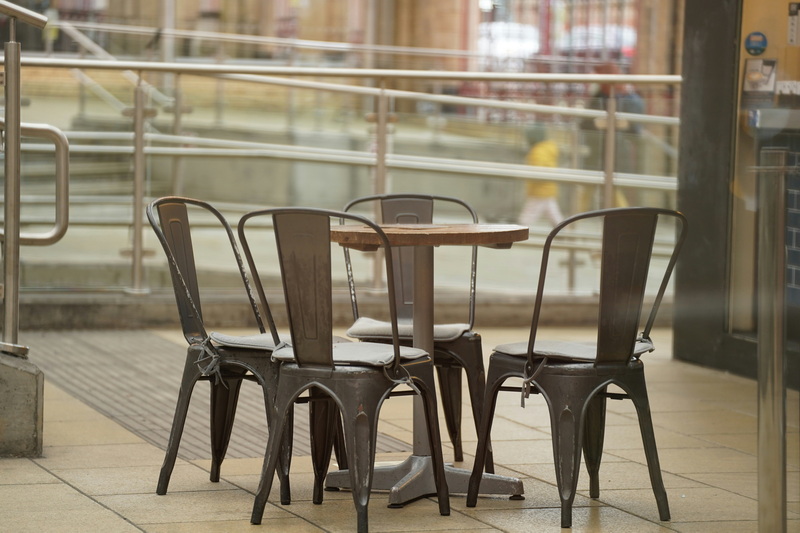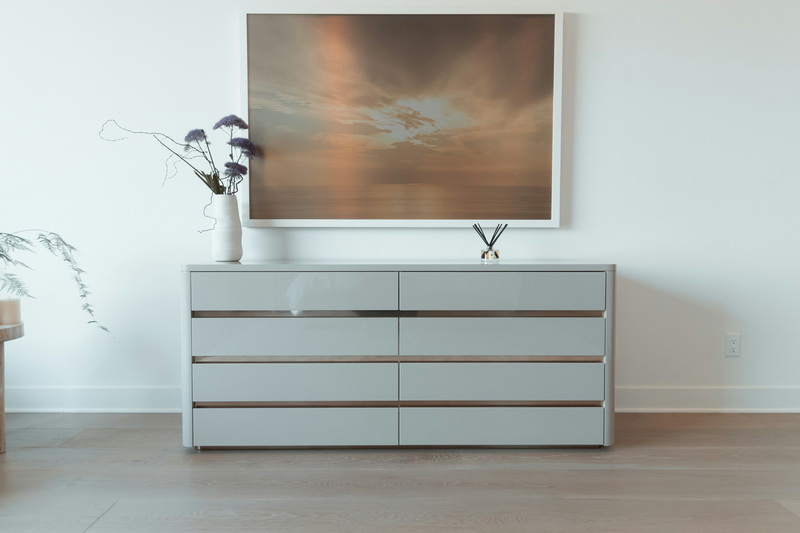English 




Views: 222 Author: Astin Publish Time: 2025-03-03 Origin: Site



Content Menu
● Introduction to Aluminum Patio Furniture
● Steps to Restore Aluminum Patio Furniture
>> Step 2: Deep Cleaning for Tough Stains
>> Step 3: Applying Wax or Protective Sealant
>> Spring
>> Summer
>> Fall
>> Winter
● Additional Tips for Longevity
● Choosing the Right Cleaning Products
● DIY vs. Professional Restoration
● Environmental Considerations
● FAQs
>> 1. How Often Should I Clean My Aluminum Patio Furniture?
>> 2. What Should I Use to Clean Aluminum Patio Furniture?
>> 3. How Can I Protect Aluminum Patio Furniture from Fading?
>> 4. Can I Use Bleach to Clean Aluminum Patio Furniture?
>> 5. How Do I Store Aluminum Patio Furniture During Winter?
Restoring aluminum patio furniture can be a straightforward process that enhances its appearance and extends its lifespan. Aluminum furniture is popular for outdoor use due to its durability and resistance to rust, but it can still suffer from fading and grime buildup over time. Here's a comprehensive guide on how to restore your aluminum patio furniture to its original shine.

Aluminum patio furniture is a favorite among homeowners due to its lightweight, corrosion-resistant properties, and ease of maintenance. However, exposure to the elements can lead to a dull appearance, which may require restoration. The good news is that restoring aluminum patio furniture is relatively simple and can be done with basic household items.
The first step in restoring aluminum patio furniture is cleaning. This involves removing dirt, dust, and grime that may have accumulated on the surface. Here's how you can do it:
1. Materials Needed:
- Warm, soapy water
- A soft sponge or cloth
- A garden hose for rinsing
2. Cleaning Process:
- Mix warm water with mild soap in a bucket.
- Dip your sponge or cloth into the soapy water, wring it out thoroughly to avoid excess water, and gently scrub the furniture.
- Work in sections to ensure all areas are cleaned evenly.
- Use a garden hose to rinse off the soap residue. Ensure all soap is removed to prevent water spots.
- Dry the furniture with a soft cloth or let it air dry.
If there are tough stains like bird droppings or sap, you may need to perform a deeper clean:
1. Materials Needed:
- Soft-bristle brush
- Soapy water
2. Deep Cleaning Process:
- Soak the stained area with soapy water for about 10-15 minutes.
- Use a soft-bristle brush to gently scrub away the stain.
- Rinse thoroughly with a hose and dry as before.
After cleaning, applying a protective layer can enhance the shine and protect the furniture from future damage:
1. Materials Needed:
- Car wax or aluminum furniture polish
- Soft sponge or microfiber cloth
2. Application Process:
- Choose a high-quality car wax or specialized aluminum polish.
- Apply the wax using a soft sponge or microfiber cloth, following the product's instructions.
- Buff the surface to achieve a glossy finish.

- Clean the furniture with warm, soapy water to remove winter grime.
- Rinse and dry thoroughly.
- Check for any damage or wear from winter and address it promptly.
- Regularly wipe down surfaces to remove dust and pollen.
- Apply a protective wax or UV protectant if exposed to direct sunlight.
- Consider using outdoor furniture covers during periods of intense sunlight to prevent fading.
- Remove fallen leaves promptly to prevent staining.
- Perform a deep clean before storing for winter.
- Use a leaf blower to clear debris from cushions and crevices.
- Use waterproof covers or store furniture indoors to protect from harsh weather.
- Check covers occasionally to ensure they are secure and moisture isn't trapped underneath.
- If storing indoors, consider using a dry cloth to wipe down the furniture to prevent moisture buildup.
- Avoid Abrasive Materials: Never use steel wool or abrasive cleaners, as they can scratch the aluminum surface.
- Lift, Don't Drag: When moving furniture, lift it instead of dragging to prevent scratches.
- Regular Cleaning: Clean your furniture regularly to prevent dirt buildup.
- Cushion Maintenance: Clean and condition fabric cushions regularly to maintain their appearance and extend their lifespan.
- Hardware Check: Periodically inspect and tighten any loose bolts or screws to ensure stability.
When selecting cleaning products for your aluminum patio furniture, it's important to choose gentle yet effective options. Avoid using bleach or ammonia, as these can damage or discolor the aluminum. Instead, opt for mild soap and water or specialized aluminum cleaners. Always read the product labels and follow the manufacturer's instructions.
If your aluminum furniture has faded significantly, you might need to use a specialized aluminum restorer. These products can help revive the original color and shine. However, always test a small, inconspicuous area first to ensure the product doesn't damage the finish.
For most cases, restoring aluminum patio furniture can be a DIY project. However, if the furniture is heavily damaged or requires complex repairs, it might be best to consult a professional. Professionals can provide specialized tools and expertise to handle more intricate restoration tasks.
When restoring your aluminum patio furniture, consider using eco-friendly cleaning products and methods. This not only helps protect the environment but also ensures a safer cleaning process for you and your family.
Always wear protective gloves and eyewear when cleaning or restoring furniture to prevent injury from chemicals or sharp edges. Ensure the area is well-ventilated if using chemical cleaners.
Restoring aluminum patio furniture is a simple yet effective way to maintain its appearance and extend its lifespan. By following these steps and incorporating seasonal maintenance, you can keep your outdoor space looking vibrant and inviting. Regular cleaning and applying protective coatings are key to preventing damage and ensuring your furniture remains in excellent condition for years to come.

You should clean your aluminum patio furniture at least once a month or as needed, especially after heavy use or exposure to outdoor elements.
Use warm, soapy water and a soft sponge or cloth. Avoid using abrasive cleaners or materials like steel wool.
Apply a protective wax or UV protectant to shield the furniture from sun damage. Regularly cleaning and maintaining the furniture also helps prevent fading.
No, avoid using bleach or ammonia, as these can damage or discolor the aluminum surface.
Store your furniture indoors or use waterproof covers to protect it from harsh winter conditions. Check covers occasionally to ensure they are secure and moisture isn't trapped underneath.
[1] https://www.housedigest.com/1303912/how-to-repair-faded-aluminum-patio-furniture/
[2] https://greyfox-outdoor.com/how-to-care-and-maintain-aluminum-patio-furniture-for-longevity/
[3] https://www.sohu.com/a/364716744_528671/
[4] https://www.youtube.com/watch?v=5NolVm5qoU4
[5] https://www.patioproductions.com/blog/features/how-to-keep-your-aluminum-patio-furniture-looking-new/
[6] https://www.sohu.com/a/126276564_155881
[7] https://hauserspatio.com/blog/expert-tips-on-cast-aluminum-patio-furniture-repair-and-maintenance/
[8] https://www.remarkablefurniture.com.au/blogs/maintenance/aluminium
Top Aluminum Furnitures Manufacturers and Suppliers in Czech Republic
Top Aluminum Furnitures Manufacturers and Suppliers in Poland
Top Aluminum Furnitures Manufacturers and Suppliers in Belgium
Top Aluminum Furnitures Manufacturers and Suppliers in Finland
Top Aluminum Furnitures Manufacturers and Suppliers in Denmark
Top Aluminum Furnitures Manufacturers and Suppliers in Greece
Top Aluminum Furnitures Manufacturers and Suppliers in Portugal
Top Aluminum Furnitures Manufacturers and Suppliers in Austria
Top Aluminum Furnitures Manufacturers and Suppliers in Norway
Top Aluminum Furnitures Manufacturers and Suppliers in Sweden
